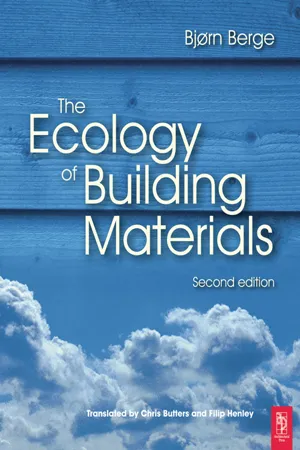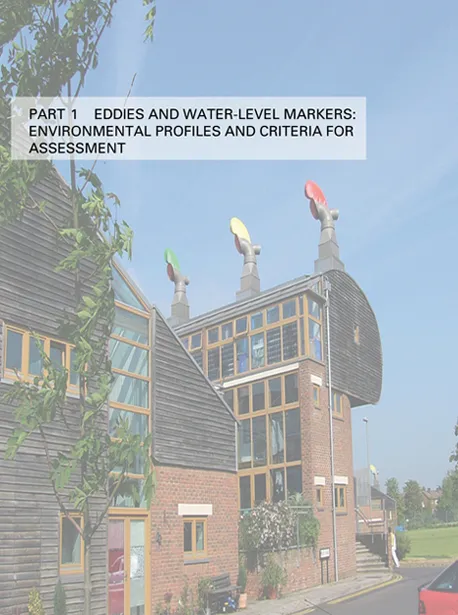![]()
![]()
1 Resources
Natural resources are usually defined as ‘renewable’ or ‘non-renewable’. The first are resources that can be renewed or harvested regularly, such as timber for construction or linseed for linseed oil. They are only renewable as long as the right conditions for production are maintained. Depletion of the ozone layer is an example of how conditions for many renewable resources can be drastically changed. Most renewable resources have photosynthesis in common. It has been estimated that human society currently exploits about 40% of the earth’s photosynthetic activity (Brown et al., 1990).
Non-renewable resources are those that can only be harvested once. These are often referred to as ‘stocks’ (iron ore is an example); or else resources that are formed extremely slowly, such as crude oil. Many of these are seriously limited; metals and fossil oils are the most exploited, but in certain regions even materials such as sand and gravel are becoming scarce. The approximate reserves of raw materials are shown in Table 1.1. It is clear that some of the most important resources are in danger of being exhausted in the near future.
Table 1.1 Non-renewable resources used in the manufacturing of building materials
Fresh water is a vital resource which cannot be described as either renewable or non-renewable. The total amount of water is constant in a global perspective; but on a regional level, shortages of water are already critical, and likely to become more so given climate change. This is especially the case for potable water, which is essential not only in food production but also in many industries. Water is often used in industry in secondary processes; for example, as a cooling liquid, which is then returned to nature polluted and with a lower oxygen content.
Biodiversity and fertile soils are also to be seen as resources in the global ecosystem; and they too are only conditionally renewable. Their rate of exploitation or depletion is now in some cases so rapid that there is a danger that critical thresholds will be crossed (Müilerman and Blonk, 2001). This is closely linked to both increased extraction of resources and increased water use. Research based on measurements of the loss of forest area, freshwater and marine species, indicates that the ‘health’ of the world’s ecosystems has declined by 30% in the past 25 years (WWF, 1998).
Usable and Less Usable Resources
It is also common to classify resources into ‘usable’ and ‘less usable’. The earth’s crust contains an infinite amount of ore. The problem of extracting it is a question of economy, available technology, effects on the landscape and environment and energy consumption. At the beginning of 1900 it was estimated that, for a source of copper to be exploitable there should be at least 3% copper in the ore; by 1970, the level had fallen to 0.6%. Resources that have been uneconomical to extract in the past can become a viable proposition; this is both due to rising value and better extraction technologies. For example, a more efficient technology for stone extraction would give this material afresh start for use in construction. The sum of usable and less usable resources is also called the ‘reserve base’, whilst the usable resources are called ‘reserves’.
There are also cases where economic conditions and developing technology have a negative impact onthe extraction of rawmaterials;forexample, technical mechanization in the timber industry has made hilly forests inaccessible. Only by using a horse or other small-scale equipment should timber be retrieved from such a forest, but this is rarely the way of the modern timber industry, despite the fact that it causes the least damage to the forest. In the same way, modern technology cannot cope with small deposits of metallic ores – modern mining needs large amounts of ore to make it economical.
Political situations can also affect the availability of raw materials. The civil war in Zaire increased the price of cobalt by 700%, as Zaire has the world’s largest deposits of cobalt. Similarly, the situation in the Persian Gulf has affected the price of oil for many years. The United States Department of Domestic Affairs has made a list of ‘critical minerals’. In addition to cobalt it includes bauxite for aluminium production, copper, nickel, lead, zinc, manganese and iron; in other words, quite a few of the most important metals (US Congress, 1983).
Used and Unused Resources
Resources can also be categorized as ‘used’or ‘unused’. The total number of different plant species for all of Scandinavia is about 1500. Of these only two to three are widely used for building, 10 are used occasionally, whilst some 60 further species have potential for use.
A further example is flint, which was once amongst the most important resources available, but is virtually left unused now. Similarly, it can be said that in 1840 oil was an almost totally unexploited ‘non-resource’.
In 1933 the geographer Zimmermann stated: ‘Resources are not anything static, but something as dynamic as civilization itself’. However, this statement does not offer us much ground for optimism. With accelerating rates of exploitation, we are on the verge of bankruptcy in many important raw materials (Weiszacker, 1998; Rodenburg, 2000). Those at a real risk of exhaustion are mineral ores and fossil oils; but for several renewables, prospects are not good either. Problems related to tropical timber are well known, and discussions centre around the effect of different forms of management, tax rates, replanting, etc. Conditions for the renewability or failure of important biological resources are very likely to change quickly as a result of increased climate change, in particular alterations in temperatures and precipitation.
It is quite absurd that our planet’s stocks of raw materials should be stripped and disappear in just a fraction of the time-span of human existence – whether by that we mean two, ten or fifty generations. Even a traditional ‘anthropocentric’ morality with a limited time perspective requires that use of such raw materials be allowed only in special circumstances, and that recycling should be mandatory.
A differentiation is also made between material resources – the actual constituents of a resource and energy resources – the type and amount of energy needed to produce the material.
1.1 Material Resources
The building industry is, after food production, the largest consumer of raw materials in the world today. A broadly accepted goal for a sustainable future is a drastic reduction in the use of raw materials. This is most important for the scarce non-renewable resources but also for the others; partly because it is the throughput of materials in the economy that is linked to major energy and environmental loads. Equally important is reducing wastage and losses during production, the construction process and throughout the life of the completed buildings. The recycling of materials following demolition must also become the rule. Recycling processes should also ensure that materials can be taken care of at their original level of quality, rather than downcycled.
1.1.1 Actions for Resource Conservation in the Production of Materials
Change-Over to Exploitation of Smaller Deposits of Raw Materials
This is mainly a question of technology. Even though modern technology is primarily geared to large-scale exploitation (‘economie...



